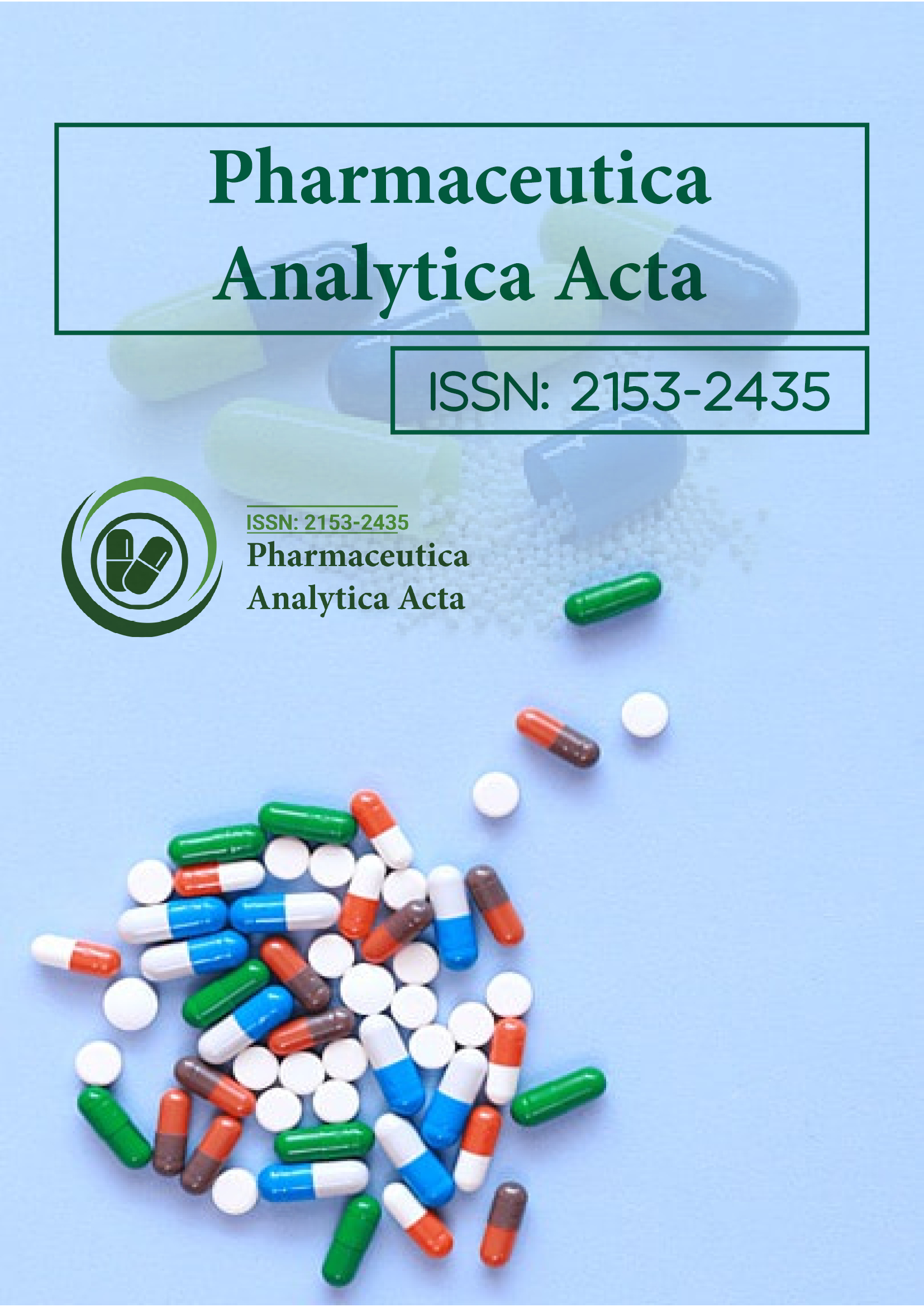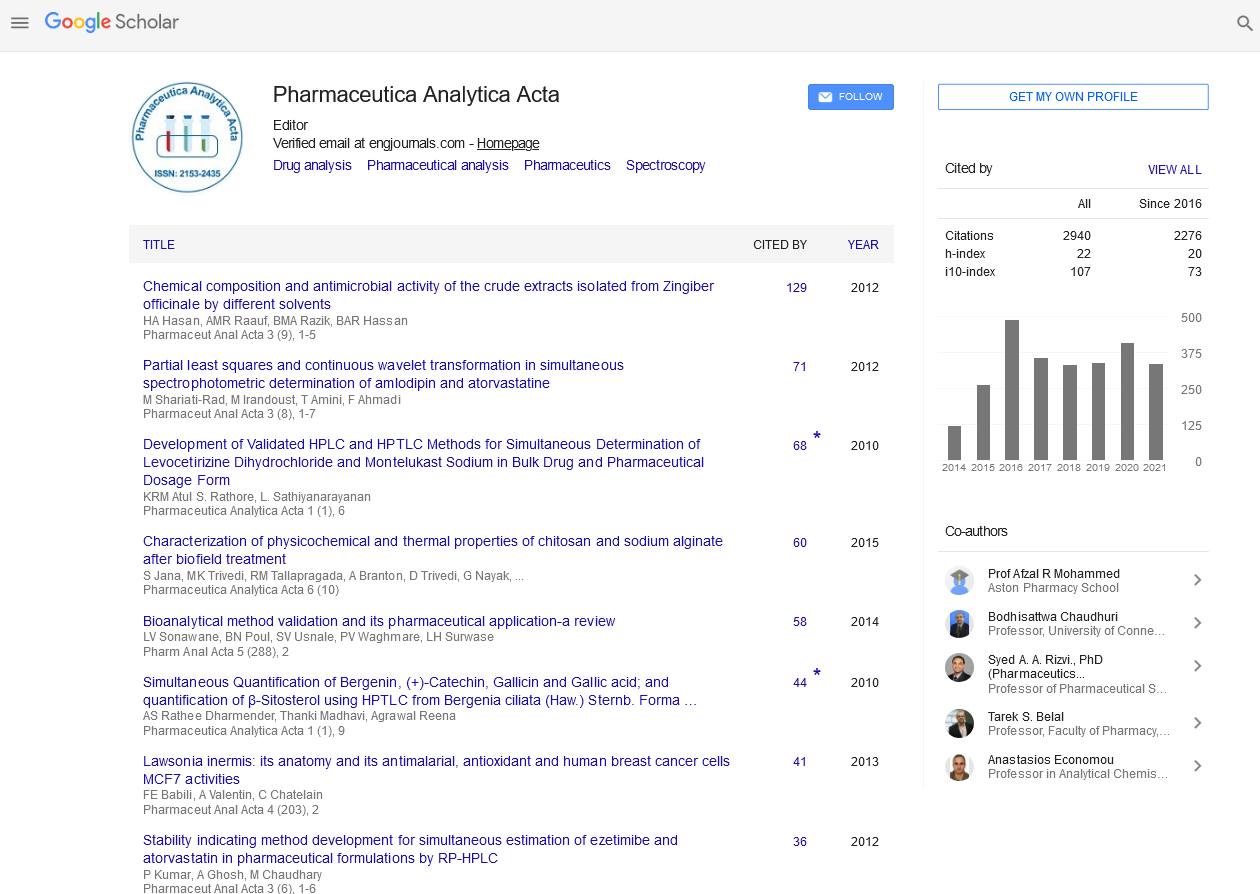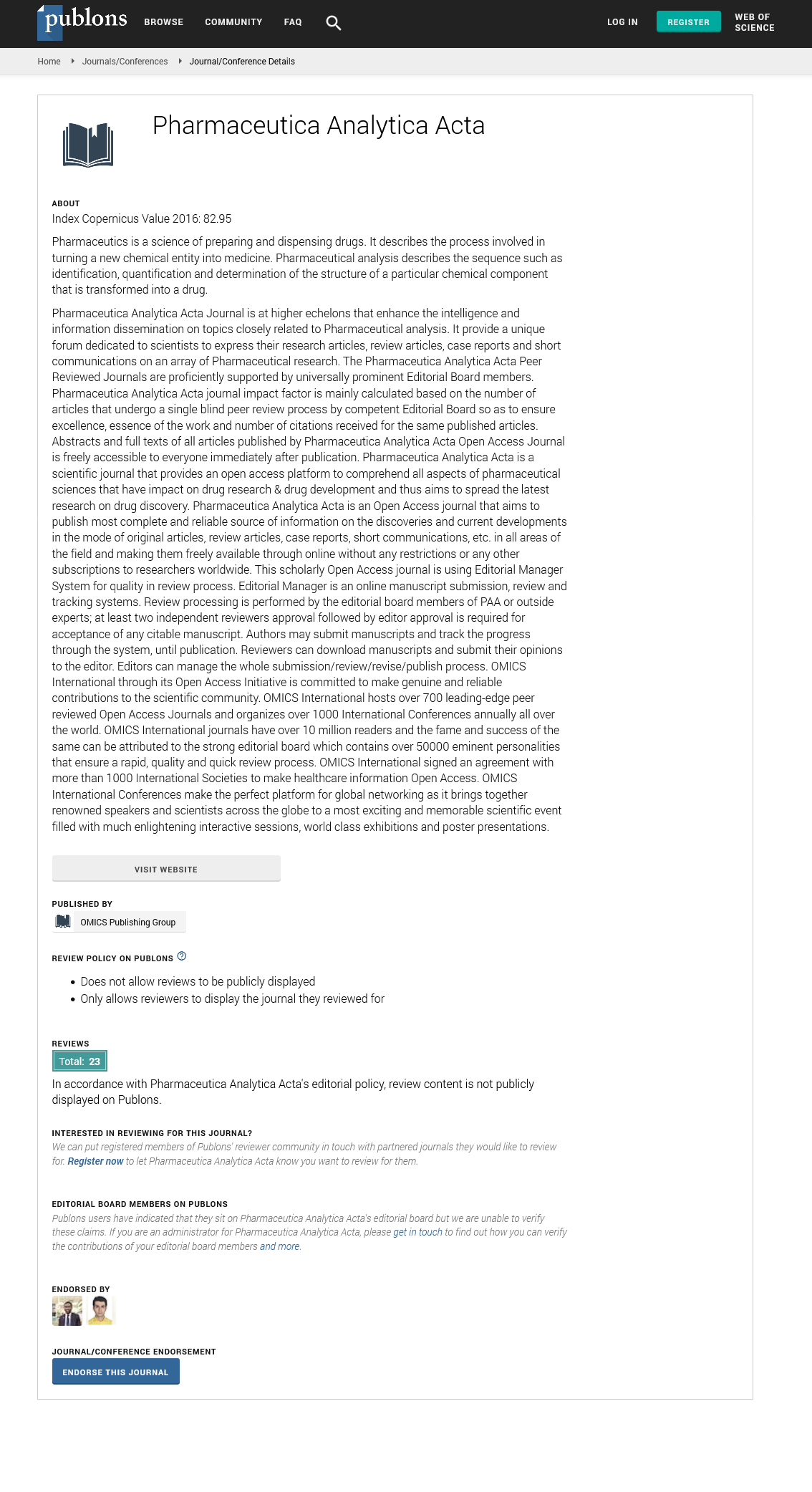Indexed In
- Open J Gate
- Genamics JournalSeek
- Academic Keys
- JournalTOCs
- The Global Impact Factor (GIF)
- China National Knowledge Infrastructure (CNKI)
- Ulrich's Periodicals Directory
- RefSeek
- Hamdard University
- EBSCO A-Z
- OCLC- WorldCat
- Publons
- Geneva Foundation for Medical Education and Research
- Euro Pub
- Google Scholar
Useful Links
Share This Page
Journal Flyer

Open Access Journals
- Agri and Aquaculture
- Biochemistry
- Bioinformatics & Systems Biology
- Business & Management
- Chemistry
- Clinical Sciences
- Engineering
- Food & Nutrition
- General Science
- Genetics & Molecular Biology
- Immunology & Microbiology
- Medical Sciences
- Neuroscience & Psychology
- Nursing & Health Care
- Pharmaceutical Sciences
Opinion - (2023) Volume 14, Issue 3
Mapping Drugs and Metabolites in Tissues and Organs with Mass Spectrometry Imaging
Hanku Paneli*Received: 02-Jun-2023, Manuscript No. PAA-23-22092; Editor assigned: 05-Jun-2023, Pre QC No. PAA-23-22092(PQ); Reviewed: 19-Jun-2023, QC No. PAA-23-22092; Revised: 26-Jun-2023, Manuscript No. PAA-23-22092(Q); Published: 03-Jul-2023, DOI: 10.35248/2153-2435.23.14.739
Description
Mass Spectrometry Imaging (MSI) is a powerful technique that allows the spatial localization and quantification of drugs and metabolites in tissues and organs without the need for labeling or extraction. MSI can provide valuable information on the pharmacokinetics, pharmacodynamics, biodistribution, metabolism, and toxicity of drugs and metabolites in vivo.
MSI involves the generation of ionized molecules from thin sections of biological samples using various ionization sources, such as Matrix-Assisted Laser Desorption/Ionization (MALDI), Electrospray Ionization (ESI), Desorption Electrospray Ionization (DESI), Laser Ablation Electrospray Ionization (LAESI), or Secondary Ion Mass Spectrometry (SIMS). The ionized molecules are then detected and analyzed by different types of mass spectrometers, such as Time-Of-Flight (TOF), Quadrupole (Q), Ion Trap (IT), Fourier Transform Ion Cyclotron Resonance (FT-ICR). The mass spectra are acquired at multiple positions across the sample surface, resulting in a set of data that can be reconstructed into two-dimensional or threedimensional images that reflect the spatial distribution and intensity of the analytes of interest.
MSI can be performed in different modes, depending on the type of information required. For qualitative analysis, MSI can be performed in full-scan mode, where all the ions within a certain mass range are detected and recorded. This mode allows the identification of unknown compounds or the discovery of new metabolites by comparing the mass spectra with databases or using tandem mass spectrometry. For quantitative analysis, MSI can be performed in targeted mode, where only specific ions corresponding to predefined analytes are detected and recorded. This mode allows the accurate measurement of the concentration and distribution of drugs and metabolites by using calibration standards or internal standards.
MSI has been applied to various types of biological samples, such as animal tissues, human tissues, cell cultures, plant tissues, microorganisms, or biofilms. MSI has also been applied to various types of drugs and metabolites, such as anticancer drugs, antibiotics, antivirals, antifungals, anti-inflammatory drugs, analgesics, antidepressants, antipsychotics, stimulants, opioids, steroids, hormones, vitamins, amino acids, lipids, sugars, or nucleotides. MSI has provided insights into the mechanisms of action, efficacy, safety, resistance, interactions, and variability of drugs and metabolites in different biological systems.
MSI can provide spatial information on the distribution and localization of drugs and metabolites in tissues and organs, which can reveal the heterogeneity, specificity, and dynamics of drug action and metabolism in vivo. It provides molecular information on the identity and structure of drugs and metabolites in tissues and organs, which can reveal the metabolic pathways, transformations, and interactions of drugs and metabolites, quantitative information on the concentration and intensity of drugs and metabolites in tissues and organs, which can reveal the pharmacokinetics, pharmacodynamics, biodistribution, bioavailability, and bioaccumulation of drugs and metabolites in vivo. It also provides label-free and extraction-free analysis of drugs and metabolites in tissues and organs, which can preserve the integrity, morphology, and functionality of biological samples and reduce the sample preparation time and cost.
MSI can be affected by various factors that may introduce variability, uncertainty, or artifacts in the data, such as the sample quality, the sample preparation, the ionization source, the mass spectrometer, the data acquisition, the data processing, and the data interpretation. It has limited sensitivity, specificity, or resolution for detecting certain drugs and metabolites in tissues and organs, depending on the type and concentration of the analytes, the type and complexity of the biological matrix, and the type and performance of the ionization source and mass spectrometer.
Citation: Paneli H (2023) Mapping Drugs and Metabolites in Tissues and Organs with Mass Spectrometry Imaging. Pharm Anal Acta. 14:739.
Copyright: © 2023 Paneli H. This is an open-access article distributed under the terms of the Creative Commons Attribution License, which permits unrestricted use, distribution, and reproduction in any medium, provided the original author and source are credited.


